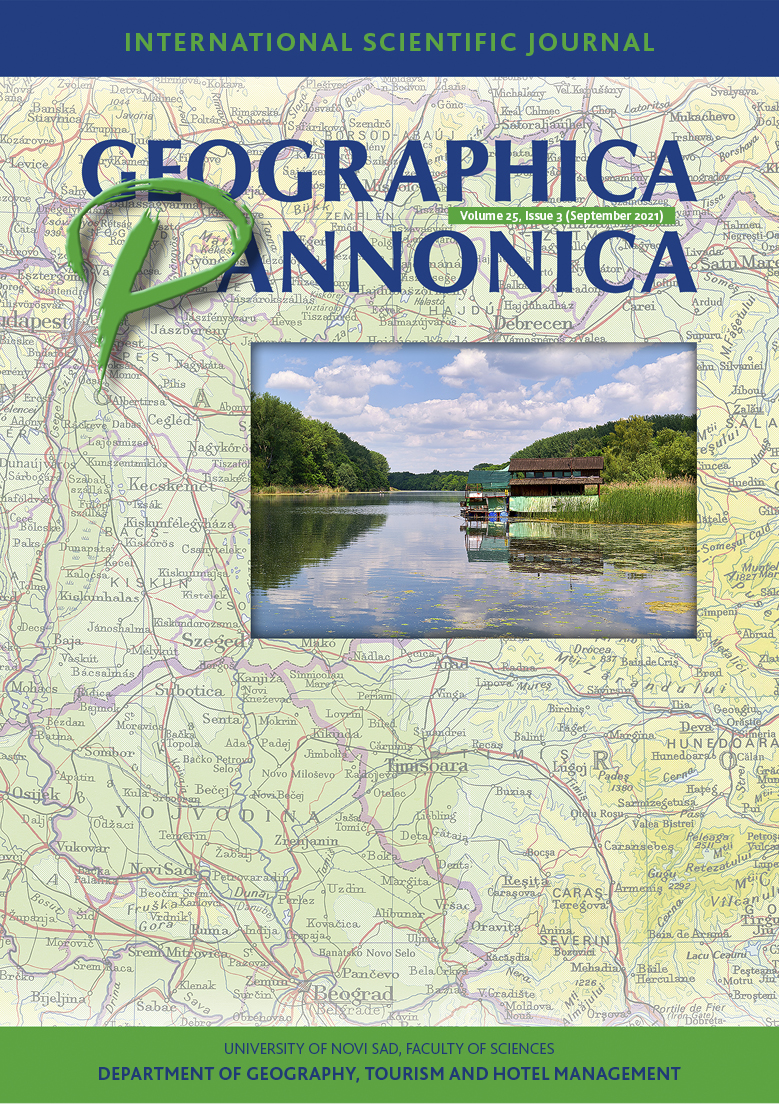Media outlets in Vojvodina and Slovenia: demographic-economic indicators and media pluralism
Abstract
The paper analyzes the relationship between demographic-economic indicators in the Autonomous Province of Vojvodina and the Republic of Slovenia. Both societies have relatively organized regulatory and political frameworks for the development of media pluralism. It has been established that there is a clear cause-effect relation between the number of media outlets in certain local self-governments and the average net salary: the municipalities and towns with the highest average salaries also boast the highest number of media outlets. However, our analysis has shown that the criteria and mechanisms for identifying risks to media pluralism are not provided: the variety of population representing different political, ideological, cultural and social groups and the variety of interests and standpoints relevant to the local and regional community.
References
Beta News Agency (2017). Authorities in Kragujevac have not organized competitions for co-financing media for three years. https://beta.rs/vesti/vesti-drustvo/65603-vlast-u-kragujevcu-tri-godine-nije-raspisala-konkurs-za-sufinansiranje-medija (21.01.2021).
Broadcasting Act (2002). http://www.iaa.rs/assets/ZAKON-O-RADIODIFUZIJI.pdf (20.12.2020).
European Commission (2016). Republic of Serbia: 2016 Report, followed by the Commissions’ communication addressed to the European Parliament, the Council, the European Economic and Social Committee and the Committee of the Regions regarding the EU enlargement policy for 2016, p. 22, available at: https://bit.ly/2EIycxT
European Commission (2018). Republic of Serbia: 2018 Report, followed by the Commissions’ communication addressed to the European Parliament, the Council, the European Economic and Social Committee and the Committee of the Regions regarding the EU enlargement policy for 2018, pp. 29. Available at: https://bit.ly/2rkgBlP(20.12.2020).
Eurostat (2020). EU population in 2020: almost 448 million, Available at: https://ec.europa.eu/eurostat/documents/2995521/11081093/3-10072020-AP-EN.pdf/d2f799bf-4412-05cc-a357-7b49b93615f1(20.12.2020).
Freedom House (2020). Media Freedom: A Downward Spiral. https://freedomhouse.org/report/freedom-and-media/2019/media-freedom-downward-spiral (21.01.2021).
Ipsos Strategic Marketing (2015). Analysis of media market in Serbia, pp. 15. Available at:http://www.rem.rs/sr/izvestaji-i-analize/izvestaji-i-analize-o-nadzoru-emitera/analize, (20.12.2020).
Kučić, J., L. (2019). Kdo drži informacijsko pištolo? Preiskujemo zemljevid medijske krajine. https://podcrto.si/kdo-drzi-informacijsko-pistolo-preiskujemo-zemljevid-medijske-krajine/ (21.01.2021)
Lang, S. (2004). Local Political Communication.In: F. Esser & B. Pfetsch (Eds.) Comparing Political Communication: Theories, Cases and Challenges (pp.151-183). New York: Cambridge University Press. DOI:10.1017/CBO9780511606991.008
Matić, J. (2016). Structural causes of crisis and strategic solutions for economic sustainability of media. Talk at the Speak up! 3 conference: towards current media policy, Belgrade.
Mihajlov Prokopović, A. (2018). Siromašni lokalni mediji, siromašna demokratija. A. Milojević & R. Veljanovski. (ured.) Verodostojnot medija-odnos finansiranja i sadržaja (str. 133-135). [Poor local media, poor democracy. In A. Milojević &R. Veljanovski (Eds.) Credibility of media – relation between financing and content (pp. 133153)]. Belgrade: Faculty of Political Science and Čigoja štampa.
Milojević, A., & Ugrinić, A. (2012). Perspektiva lokalnih komercijalnih radio stanica u Srbiji. U: R. Veljanovski (ured.) Radio-difuzija u Srbiji, sadašnjost i budućnost (str. 103-127). [Future of local commercial radio stations in Serbia. In: R. Veljanovski (Ed.) Public radio-broadcasting in Serbia, present and future (pp.103-127)]. Belgrade: Faculty of Political Science and Čigoja štampa. URL: https://www.fpn.bg.ac.rs/wp-content/uploads/2017/01/Radio-difuzija-u-Srbiji-sadasnjost-i-buducnost.pdf
Milosavljevic, M, Biljak Gerjevic, R. (2020). Monitoring Media Pluralism in the Digital Era: Application of the Media Pluralism Monitor in the European Union, Albania and Turkey in the years 2018-2019. Country report: Slovenia. https://cadmus.eui.eu/bitstream/handle/1814/67818/slovenia_results_mpm_2020_cmpf.pdf?sequence=3. (21.01.2021).
Non-Paper” on the current state of affairs regarding chapters 23 and 24 for Serbia, November, 2017. Available at: https://bit.ly/2BVp8TO, (20.12.2020)
Novi Sad School of Journalism (2018). Pressures on local media in Vojvodina. Novi Sad. Available at: http://www.novinarska-skola.org.rs/sr/?page_id=2534&lang=en, (20.12.2020).
Parliamentary Budget Office. http://pbk.rs/wp-content/uploads/2020/02/Prosecna_zarada_2019.pdf. (14.12.2020).
Recommendation CM/Rec(2018)1[1] of the Committee of Ministers to members states on media pluralism and transparency of media ownership. https://rm.coe.int/ser-cm-rec-2018-1-media-pluralism-and-transparency-pdf/16809371eb
Reporters without borders (2019). Threats, systematic smear campaigns and media concentration. https://rsf.org/en/slovenia (17.01.2020).
Republic of Serbia, Autonomous Province of Vojvodina, Provincial Government. http://www.vojvodina.gov.rs/sr/%D0%B0%D1%83%D1%82%D0%BE%D0%BD%D0%BE%D0%BC%D0%BD%D0%B0-%D0%BF%D0%BE%D0%BA%D1%80%D0%B0%D1%98%D0%B8%D0%BD%D0%B0-%D0%B2%D0%BE%D1%98%D0%B2%D0%BE%D0%B4%D0%B8%D0%BD%D0%B0. (08.01.2021).
Republic of Slovenia, Ministry of Culture. https://rmsn.ekultura.gov.si/razvid/mediji?fbclid=IwAR3owaeK6lf6Y-ADWby1ifyJsn72m25JfkPcFkDvY8zkNuT4R9L5Q7oC8Po (20.12.2020).
Republic of Slovenia, Statistical Office. Average net salaries in municipalities, Slovenia, annual report https://pxweb.stat.si/SiStatData/pxweb/sl/Data/-/0772615S.px (20.12.2020).
Rulebook on co-financing projects for meeting public interest in the field of public information, https://www.paragraf.rs/propisi/pravilnik-sufinansiranju-projekata-oblasti-javnog-informisanja.html (20.12. 2020).
Statistical Office of the Republic of Serbia (2020). Municipalities and regions in the Republic of Serbia. https://publikacije.stat.gov.rs/G2020/Pdf/G202013047.pdf (27.03.2021).
Statistical Office of the Republic of Serbia (2019). Regions in the Republic of Serbia, 2019. https://publikacije.stat.gov.rs/G2020/Pdf/G202026001.pdf (20.12.2020).
Strategy of development of the public information system in the Republic of Serbia for 2020-2025. https://www.kultura.gov.rs/tekst/sr/4993/strategija-razvoja-sistema-javnog-informisanja-u-republici-srbiji-za-period-od-2020-do-2025.php (02.09.2020).
The Law on Public Information and Media https://www.paragraf.rs/propisi/zakon_o_javnom_informisanju_i_medijima.html (10.01.2021)

